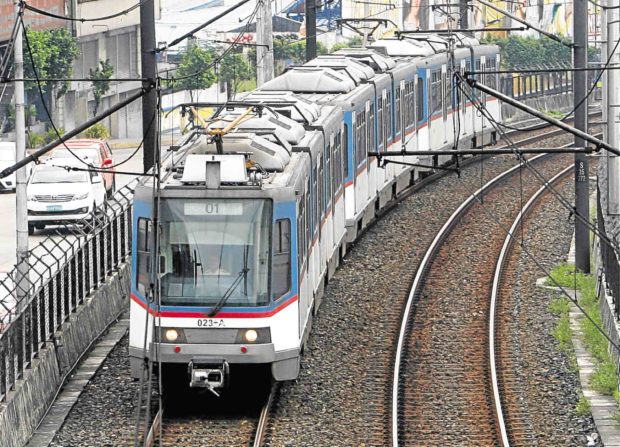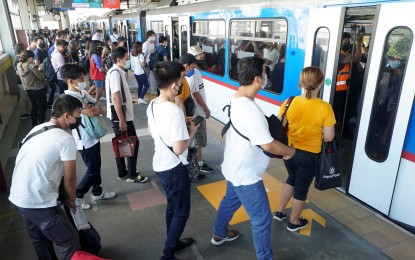By Federico D. Pascual Jr. (POSTSCRIPT) | The Philippine Star | September 21, 2014
SIMPLY COMPLICATED: The arrival next year of 48 new coaches imported from China by the Department of Transportation and Communications is no guarantee that riding the Metro Rail Transit (MRT-3) will finally become safe and convenient.
In a recent PowerPoint presentation to the Senate, the DOTC said: “The 48 new train cars are in the production process. This is the real solution to the long lines and over-congestion, increasing capacity by 66 percent and will increase headway to 2.5 minutes.”
The contract amount, according to the DOTC, is P3,759,382,400. The prototype for testing is expected to arrive in August 2015, with three to four rail cars to be delivered monthly from September 2015 to the end of 2016.
On the PowerPoint screen, the promised solution looked so pat and simple, but on the hard rails running above EDSA it could end up being complicated for the 550,000 daily commuters taking the trains.
* * *
CAREFUL WITH PPP!: Better to be a bit skeptical when it comes to these PPP (PowerPoint Presentations) of the DOTC.
First of all, the current system of the MRT-3 is Czech-made. The new train cars or coaches are being purchased from a Chinese corporation, Dalian Locomotive & Rolling Stock Co. Ltd. CNR Group of China.
(We use the terms “car” and “coach” interchangeably. A “train” refers to two or three cars/coaches coupled together to run as one. The 48 new cars can be configured into 16 three-car trains.)
There is a real risk that the trains from China might not be compatible with the existing system. We will know only when a prototype arrives next year.
There have been reports, such as in Taiwan and Chicago, of train parts imported from China having been found to be “internally defective and potentially dangerous … that could break and lead to a derailment.”
If the prototype turns out to be problematic and if the DOTC insists on the purchase, we may be left holding 48 unsafe rail cars or there may be another delay of a couple of years in the expansion or upgrading of the MRT system.
* * *
PRECISE MESHING IN: Secondly, when the Chinese trains start arriving, there would have to be an upgrade of the entire system to accommodate the new units. It is not a simple matter of just attaching the 48 new cars to the old ones.
Among other details, there would have to be adjustments in signaling, an increase in parking space in the depot, adjustment of the traction power system to ensure compatibility with the new trains, et cetera.
The MRT system is designed to run 20 trains (or 60 cars) during peak hours, although this has dropped to 16-18 trains because of breakdowns and cannibalizing for parts. The arrival of the trains at each station must be precisely timed to accommodate a three-car configuration.
With 48 new cars, there would have to be a new signaling orientation to ensure that 36 trains (60 existing cars + 48 new cars/3 cars per train) can be precisely handled during peak hours.
* * *
NO COORDINATION: Finally, it is odd that the bidding out of all proposals of the DOTC, the operator, is being done reportedly with neither consent nor coordination at least with MRT Corp., the owner.
The DOTC has the following proposals up for bidding: Automatic Fare Collection System; Ancillary Systems for P870 million; Signaling System for P184,709,302; Rail Replacement for P119,472,000; Train Overhaul for P1.15 billion; Escalators and Elevators or Convenience Facilities for P50 million; and Radio Communication System for P110 million.
If the DOTC would only coordinate with the MRT owners, they would realize that the P1.15-billion proposal for train overhaul may not be a separate item but a responsibility at the expense of the maintenance provider.
* * *
UNNECESSARY EXPENSE: The DOTC could save Filipino taxpayers P1.15 billion on this one item alone!
In the past, from 2000 to 2012, the contract of Sumitomo (the original maintenance provider of the MRT) already included train overhaul at its expense. Its contract made Sumitomo assume what is referred to as the “Single Point of Responsibility.”
This meant that any time there was a problem with the trains, Sumitomo the maintenance provider was responsible. So they took it upon themselves to do the general overhaul of the train system.
Why the costly idea this time of separating this P1.15-billion bid item?
* * *
CHOP-CHOP SYSTEM: By cutting up and spreading out the MRT contracts among different bidders, the DoTC has abandoned the concept of a single point of responsibility.
That explains why today, whenever there is a breakdown, the maintenance provider has the audacity to point blaming fingers at others — and the public wonders who is responsible when all fingers should in fact point to the maintenance provider.
Upon his return from his 12-day sojourn in Europe and New York, President Noynoy Aquino may want to ask his DOTC boys why they had chopped up the responsibilities for separate bidding, leaving the long-suffering riding public with just that: a chopped-up train system.
MRT Corp., btw, is wholly owned by MRT Holdings, which is owned by: Astoria Investment Ventures Inc. (Ayala Group); Anglo Philippines Holdings (National Bookstore Group); Railco Investments Inc. (Ramcar Group); DBH Inc. (Seiko Philippines Group); Fil-Estate Corp. (Sobrepeña Group); Emerging Allied (used to be interest of Allante Realty Devt Corp./Lao Group); and Sheridan LRT Holdings Inc. (Unilab Group).There is no one majority owner because Astoria, Fil-Estate, Anglo and Railco each owns 18.6 percent.
* * *
RESEARCH: Access past POSTSCRIPTs at www.manilamail.com. Follow us via Twitter.com/@FDPascual.Email feedback to This email address is being protected from spambots. You need JavaScript enabled to view it.

 Twitter
Twitter Facebook
Facebook

















